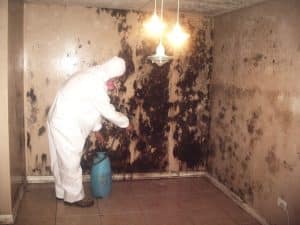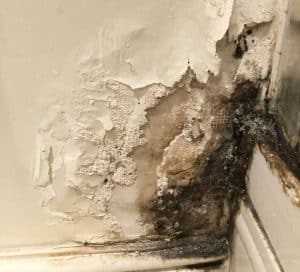Water seeping into your basement can derail your home improvement plans and turn a potential cozy space into a damp concern. Spotting the warning signs early often involves checking plumbing for leaks and paying attention to excess moisture. Thankfully, a free foundation inspection can pinpoint the underlying causes behind a wet basement, setting the stage for the right kind of intervention. Don’t let a little moisture escalate into a major problem. This article reveals the key methods and considerations for keeping your basement dry and fortifies your home against water damage; read on to learn how you can reclaim and enjoy every inch of your space.
How to Find Out What’s Causing the Moisture in Your Basement

Detecting the origin of basement moisture begins with a thorough examination of basement systems, paying close attention to any adhesive breakdown that could signal seepage points. Homeowners should inspect the space where walls meet the floor, a common site for moisture to intrude.
When residents notice irregular moisture patterns, it often points to the need for a repair sump pump. A functional sump pump is a critical component in maintaining a dry basement, ensuring water collected from weeping tiles is effectively expelled from the interior.
Customers may overlook the significance of humidity in contributing to basement dampness. Monitoring and managing indoor humidity levels are essential, with the use of a dehumidifier often being a simple yet effective remedy.
Lastly, persistent damp spots or efflorescence on walls could suggest the need for a professional assessment of the basement’s waterproofing integrity. Experts in basement systems can offer solutions that address the root cause, preventing future moisture-related issues.
3 Types of Interior Waterproofing for Your Basement
Keeping your basement dry involves understanding the specific challenges your space faces and the tools available to combat them. Options for interior waterproofing offer varied methods to protect against water intrusion. Concrete, an inherently porous material, benefits greatly from waterproof coatings; these act as a barrier, keeping moisture at bay and maintaining the structural integrity of your foundation. For those seeking a solution that penetrates the surface to bond with concrete, silicate-based concrete sealers offer a robust defense, reacting chemically to create a hard, waterproof surface. For basements needing a quick fix that homeowners can apply with ease, waterproofing paint, which is an acrylic formula, might be the answer.
This choice is not only practical but serves as a first defense, especially if used in conjunction with a dehumidifier to control internal humidity levels. Moreover, for those facing more serious water problems, integrating a submersible pump can work in tandem with these methods to provide an efficient water evacuation system. With the right approach and experience in applying these techniques, homeowners can achieve long-lasting protection for their valuable lower-level spaces.
Concrete Waterproofing Coatings
Concrete waterproofing coatings are a vital tool for wet basement repair, offering a sturdy blockade against moisture ingress. These coatings are rigorously tested and backed by endorsements from organizations like the Better Business Bureau, providing homeowners with confidence in their investment.
Adhering to manufacturers’ terms of service ensures optimal application of the concrete coatings, which works in harmony with sump pumps and other basement waterproofing solutions to secure basements from water damage. Such coatings are designed to seamlessly integrate with a home’s existing waterproofing strategy, offering a robust layer of protection that stands the test of time.
Silicate-Based Concrete Sealers
Silicate-based concrete sealers join forces with the natural composition of concrete to fight against moisture. Once applied, these sealers delve into the substrate, prompting a reaction with the concrete’s components to form a solid, impermeable layer that serves as a steadfast basement waterproofing foundation.
As landscape factors can redirect water toward the foundation, a silicate sealer’s resilient barrier maintains the integrity of the basement’s defenses, essentially helping to keep the basement dry. In conjunction with a strategically placed pump, this barrier minimizes the need for frequent water mitigation, providing long-term peace of mind for homeowners.
Waterproofing Paint Is an Acrylic Formula
Acrylic waterproofing paint offers a valuable shield against moisture, forming a protective layer over basement walls. Its application creates a reliable barrier on the perimeter, designed to safeguard against the typical issues faced in leaky basements.
Success in using this type of paint hinges on the correct preparation and knowledge of the substrate, as well as adherence to local building code requirements. A generous coat of this paint, which is easy to apply, can significantly minimize water intrusion in basements.
Exterior Waterproofing for Your Basement: Costs & How It Works

Residents seeking to safeguard their homes against moisture intrusion should consider the waterproofing basement cost an investment in their property’s longevity and their own health. While prices may vary depending on the complexity of the job, preventative financial planning for waterproofing helps avoid future excess spending on repairs and health-related costs.
When balancing the budget for home maintenance, including the expense of external basement waterproofing is essential. Proper waterproofing shuts out moisture and condensation, providing a long-term resolution that preempts costly damage and preserves the integrity of the foundation.
Tackling basement dampness through external waterproofing solutions not only shields the home from structural damage but also maintains a healthier living environment by reducing the potential for allergen growth. Investing in the right waterproofing measures delivers peace of mind, knowing both the home and the health of its occupants are well protected.
Conclusion
Basement waterproofing is a critical safeguard for maintaining structural integrity and preventing moisture-related damage. The application of sealants and waterproof paints provides an active defense against water intrusion, while sump pumps effectively manage excess water. Regulating indoor humidity with dehumidifiers is also a vital step in protecting basements from dampness. Altogether, these measures contribute to a healthier living space and can save homeowners from future costly repairs.

Everdry Waterproofing is one of the nation’s largest Basement waterproofing companies. Everdry specializes in basement waterproofing, crawlspace waterproofing, foundation repair and basement ventilation. Our patented, safe and 100% effective waterproofing method can be used on foundations consisting of poured concrete, block, brick, stone, red clay tile plus crawlspaces and slabs. We have been in business for more than 40 years and have over 85,000 “RAVING FANS.”
